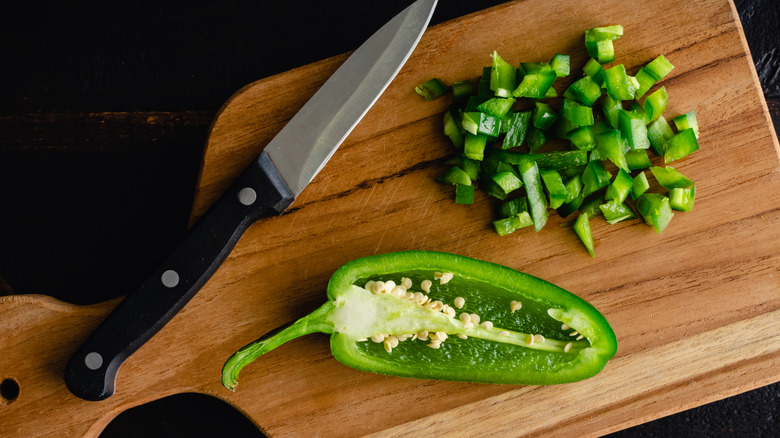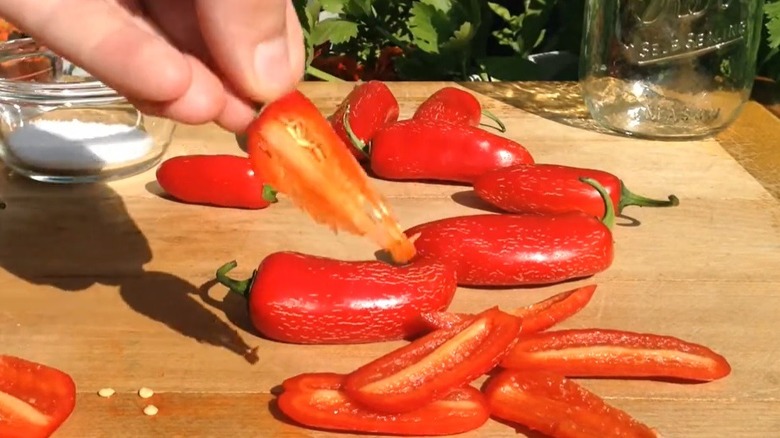The Vertical Slicing Hack To Cut Jalapeños Without Touching The Seeds
Spicy isn't one of the five famous tastes our taste buds perceive because we don't use our taste buds to perceive spice. Instead, spiciness is a sensation picked up by pain receptors that, in culinary lingo, we refer to as heat. The component responsible for the heat and spiciness associated with jalapeño peppers is called capsaicin. Even before ingesting a jalapeño, you might have felt their heat by simply handling them.
If you've ever diced or deveined a jalapeño pepper, you've probably burned your fingertips after unintentionally touching its seeds. While capsaicin exists in the jalapeño's skin, the highest concentrations of capsaicin are in the white pith that anchors the seeds and attaches to the stem. To avoid a capsaicin-induced chemical burn, try a vertical slicing method that effectively prevents piths and seeds from coming into contact with your fingers.
The hack has you stand a jalapeño pepper upright, holding it by its stem and using the sturdy surface of the cutting board to brace it for the next step. Using a sharp knife, cut the jalapeño's skin in a vertical downward slice from the outer cap of the stem to the tip of the jalapeño. Repeat this step twice more, until all sides of the jalapeño skin are free of the stem cap, and you're left holding the stem, pith, and seeds. You'll only ever touch the stem, saving your fingers, and potentially your eyes and nose, from a world of pain.
Jalapeño prep tips and the notion of desflemar
While the vertical cutting hack will eliminate the bulk of your threat against burned fingers, the skin still contains enough capsaicin to pose a risk. So unless you're throwing the skins into a recipe without breaking them down further, there are precautions you can take once you've executed the vertical cutting hack. If you're dicing or cutting the jalapeño into strips, we recommend coating your fingers in oil before handling the skin to create a barrier between your skin and the capsaicin-infused oils that seep out of the jalapeño.
You can also use latex gloves if you'd rather not get your fingers oily. Still, both gloves and oily fingers will contain capsaicin, so ensure that you don't touch your eyes, nose, or lips until you've removed the oil or gloves and washed your hands with soap. If you're adding jalapeños to a recipe, chances are you enjoy a little bit of heat. However, you can reduce the heat level and let the savory vegetal taste of the pepper shine through by using the common Mexican cooking technique known as desflemar.
Desflemar refers to soaking food in a solution or heated water to remove bitterness, spiciness, or any other unwanted taste before cooking and consumption. For jalapeños, you can throw the deseeded skins into heated water or a vinegar and water solution to soak for around 15 minutes before chopping them to use in a recipe.

